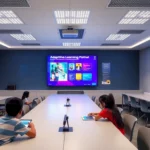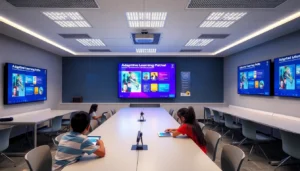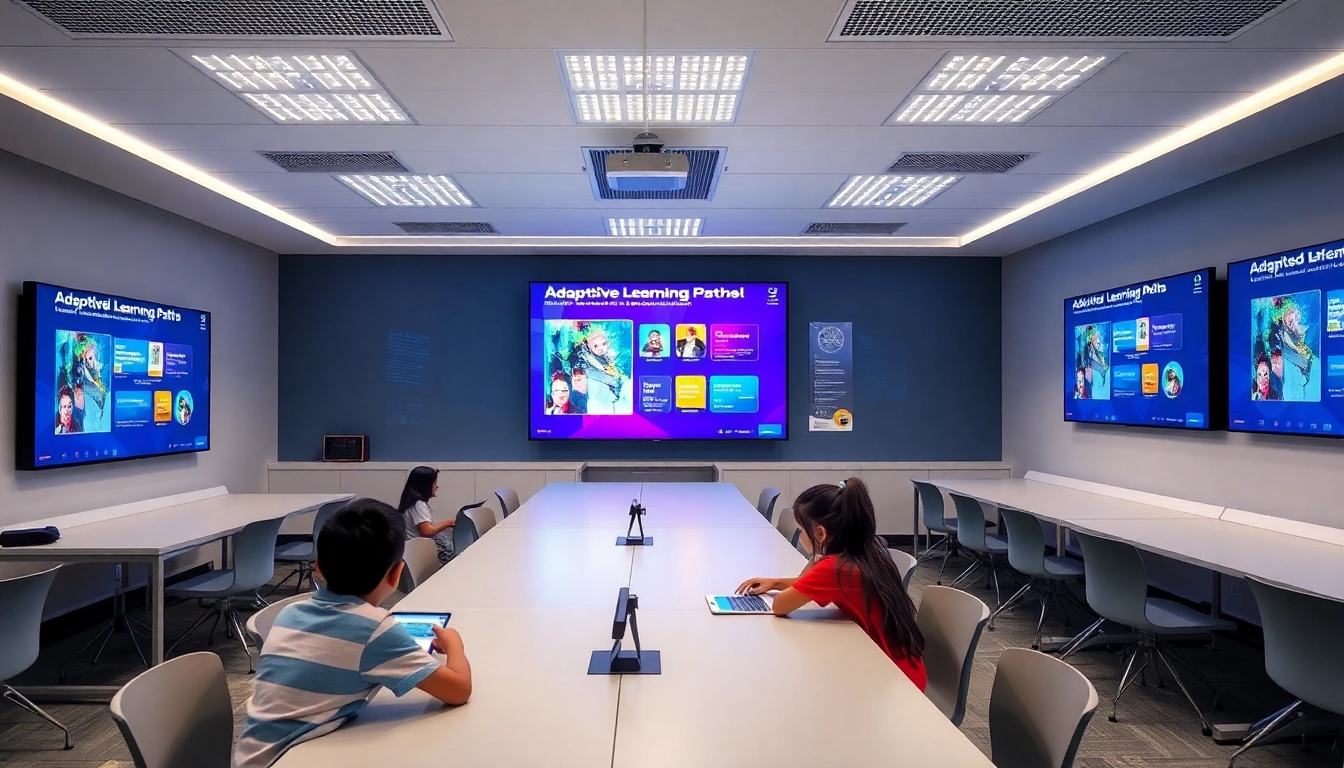Understanding Adaptive Learning Design: Foundations and Key Concepts
What is Adaptive Learning Design and Why It Matters
In today’s fast-evolving educational landscape, the demand for personalized learning experiences has never been greater. adaptive learning design plays a pivotal role in transforming traditional curricula by tailoring educational content to meet the unique needs of each learner. Unlike one-size-fits-all approaches, adaptive learning design dynamically adjusts lessons, exercises, and assessments based on real-time student performance, preferences, and engagement levels. This personalization not only enhances comprehension but also boosts motivation and retention, ultimately leading to improved learning outcomes.
In an era where diverse learning styles—visual, auditory, kinesthetic—compete for attention, adaptive learning design ensures content resonates with each individual, making education more inclusive and effective.
Implementing adaptive methodologies is especially critical in scalable digital environments, enabling educators and institutions to serve large, heterogeneous audiences without sacrificing quality. As digital tools become more sophisticated, the integration of adaptive learning principles ensures curricula can evolve alongside learners, promoting equitable access and fostering lifelong learning habits.
Core Principles Behind Effective Adaptive Learning Strategies
Developing effective adaptive learning strategies hinges on several fundamental principles that align technology, pedagogy, and learner data:
- Personalization: Content must adapt to individual learner profiles, adjusting difficulty, sequencing, and modality.
- Data-Driven Decision Making: Continuous collection and analysis of learner interactions guide real-time adjustments.
- Immediate Feedback: Providing learners with timely, constructive feedback fuels engagement and self-regulation.
- Scaffolding and Support: Adaptive systems should offer just-in-time hints, hints, and scaffolds tailored to learner progression.
- Scalability: Strategies must be designed to seamlessly accommodate growing and diverse learner populations.
Incorporating these principles ensures that adaptive learning moves beyond mere automation to become a transformative pedagogy that respects individual learning journeys while maintaining pedagogical rigor.
Differences Between Traditional and Adaptive Content Approaches
Traditional instructional content typically follows a linear, fixed design: teachers deliver the same lessons to all students, with assessments aimed at measuring uniform achievement. While effective in certain contexts, this approach often neglects individual differences, leading to disengagement or surface-level learning.
In contrast, adaptive content approaches are inherently student-centered. They leverage data analytics and intelligent algorithms to modify instructional pathways dynamically. For example, if a student demonstrates mastery in a concept, the system progresses them to more advanced topics; if not, it provides additional practice or alternative explanations.
Such agility reduces boredom and frustration, encouraging deeper engagement. Notably, adaptive content is typically modular, reusable, and capable of integrating multimedia and interactive elements, creating a richer, more immersive learning environment.
Implementing Adaptive Learning Design in Your Curriculum
Step-by-Step Guide to Creating Personalized Learning Experiences
- Identify Learning Objectives: Clearly define what knowledge, skills, or competencies learners should acquire.
- Assess Learner Profiles: Gather data on learners’ prior knowledge, preferences, and learning styles through surveys, assessments, or existing records.
- Select Appropriate Technologies: Use tools like Mexty to facilitate content creation, personalization, and data collection effortlessly.
- Design Modular Content: Break down lessons into small, adaptable units that can be sequenced flexibly based on learner responses.
- Implement Adaptive Algorithms: Program systems to respond to learner performance, offering personalized pathways, hints, and additional resources.
- Integrate Assessment and Feedback: Embed formative assessments that inform the system’s next steps and encourage self-regulated learning.
- Test and Refine: Pilot the curriculum, collect data, and iteratively improve content and adaptive pathways.
With platforms like Mexty, educators can accelerate this process, creating engaging, personalized content in minutes without sacrificing their unique educational voice.
Tools and Technologies for Simplifying Adaptive Learning Development
Advances in educational technology have democratized adaptive learning content creation. Automated content authoring tools, learning management systems (LMS), and AI-driven platforms are integral. Mexty, for example, enables educators to build stunning interactive courses and SCORM-compliant content effortlessly. Its intuitive interface allows the quick creation of tailored lessons, quizzes, and assessments—integrating multimedia and interactive components—without extensive technical expertise.
Other essential tools include data analytics dashboards that monitor student progress and systems that embed intelligent algorithms for real-time adaptation. Open architectures and standard protocols (like SCORM and xAPI) further enhance interoperability and scalability.
Case Studies: Successful Adaptive Learning Integration in Education
Numerous institutions have demonstrated the transformative power of adaptive learning. For instance, a higher education university implemented a digital curriculum that dynamically adjusted content based on student responses, resulting in a 25% reduction in dropout rates and improved exam scores. Using sophisticated data tracking, educators identified common misconceptions and tailored remedial modules, significantly enhancing student mastery.
In corporate settings, firms adopted adaptive modules for training sales teams, customizing content to individual skill gaps. This approach shortened training time by up to 30% and increased engagement levels.
Best Practices for Optimizing Adaptive Learning Design
Designing Engaging and Varied Content to Enhance Student Motivation
Engagement is fundamental to successful adaptive learning. Incorporate a mix of media—videos, podcasts, simulations, and gamified elements—to cater to diverse learning preferences. Utilizing storytelling and real-world scenarios fosters relevance, while interactive quizzes provide immediate reinforcement.
Regularly updating content and incorporating learner-generated ideas help maintain novelty and ownership, boosting intrinsic motivation.
Leveraging Data to Refine and Personalize Learning Journeys
Data is the backbone of adaptive design. Track metrics such as time spent on tasks, success rates, and pattern recognition. Use this data to identify learning gaps, adjust content difficulty, and personalize feedback. Advanced platforms utilize AI to analyze patterns and recommend next steps, creating a continuous loop of improvement.
Common Challenges and How to Overcome Them Effectively
Challenges include lack of technical expertise, data privacy concerns, and resistance to change. Solutions involve choosing user-friendly platforms like Mexty, ensuring compliance with data protection laws, and providing professional development to encourage buy-in. Pilot programs can demonstrate value and build confidence before full-scale rollouts.
Measuring Impact and Continuous Improvement in Adaptive Learning
Key Metrics to Track Student Progress and Engagement
- Completion rates of modules and assessments
- Time spent on tasks vs. mastery levels
- Student performance improvements over time
- Engagement indicators such as activity frequency
- Feedback quality and student satisfaction
These metrics provide actionable insights to refine instructional design, ensuring adaptive systems effectively support learner success.
Feedback Loops for Iterative Content Enhancement
Establish ongoing feedback channels—surveys, reflection prompts, and analytics reports—to capture learner experiences and identify content weaknesses. Use this information for continuous updating, ensuring content remains relevant and effective. Combining quantitative data with qualitative insights fosters a culture of improvement.
Scaling Adaptive Learning Design for Large and Diverse Learner Groups
Scalability involves modular content, automation, and robust analytics. Cloud-based platforms like Mexty facilitate scaling without exponentially increasing workload. Tailored learning pathways can be expanded across multiple courses and institutions, fostering personalized education at scale.
Future Trends and Innovations in Adaptive Learning Design
Emerging Technologies Shaping Personalization at Scale
The integration of Artificial Intelligence (AI), machine learning, and predictive analytics is revolutionizing adaptive learning. These technologies enable systems to anticipate learner needs and proactively tailor content. Virtual reality (VR) and augmented reality (AR) are also emerging, offering immersive experiences that adapt to the learner’s progress and preferences.
Integrating AI and Machine Learning for Smarter Content Adaptation
AI-powered systems analyze extensive learner data to generate personalized pathways, recommend resources, and optimize learning sequences. They can identify at-risk students early, allowing targeted interventions. Tools like Mexty are paving the way for smarter content creation and adaptation, reducing educator workload while increasing efficacy.
Preparing Educators and Learners for the Evolving Digital Classroom
Future-ready education requires training educators in adaptive pedagogy and digital tools. Learners must also develop self-regulation and digital literacy skills to maximize personalized pathways. Ongoing professional development and user-centered platform design are vital for a smooth transition.

















